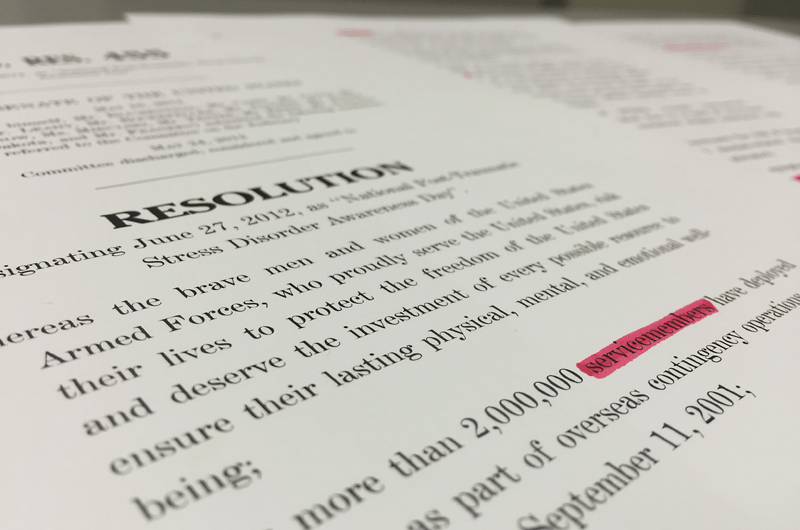Federal Legislation Ignores PTSD Toll on Civilians
 By Rachel Ewing
By Rachel Ewing

- Drexel Environmental Collaboratory Releases Cross-Sector Findings on Severe Weather Recovery Challenges
- Drexel’s Hydration Stations Cut Plastic Waste and Costs
- Drexel Launches the Manuel Stamatakis Center for Alternative Investments at the LeBow College of Business
- Drexel-Penn A Cappella Sing-Off Brings a New Battle of 33rd Street

Federal laws explicitly addressing post-traumatic stress disorder (PTSD) have overwhelmingly focused on the needs of military personnel and veterans, according to a new analysis published in the Journal of Traumatic Stress.
The study, authored by Jonathan Purtle, DrPH, an assistant professor at the Drexel University School of Public Health, is the first to examine how public policy has been used to address psychological trauma and PTSD in the U.S., providing a glimpse of how lawmakers think about these issues.
Purtle found that in federal legislation introduced explicitly to address PTSD, an overwhelming majority of the language – more than 90 percent of the mentions of PTSD in these bills – showed efforts were targeted exclusively at military personnel. More than 90 percent of mentions of PTSD in the bills were likewise intended to address consequences of combat exposure.
This emphasis does not match with the frequency of PTSD in the U.S. population.
“Although trauma and PTSD are serious issues affecting military populations, the raw number of people affected by PTSD includes substantially more civilians simply because the civilian population is so much larger,” said Purtle.
As an example, Purtle pointed to the specific language of the bill that created National PTSD Awareness Day. The text of that resolution describes PTSD as a “wound of war” that affects people in the military and does not acknowledge that PTSD exists among civilians.
Many types of traumatic events can cause PTSD, including violent injury, car accidents, surviving life-threatening diseases, sexual assault and natural disasters, as well as combat exposure. One-time and chronic exposure to traumatic events can also cause traumatic stress, involving some symptoms common in PTSD, without matching the full pattern of diagnostic criteria for PTSD.
Purtle also found that, just as lawmakers appeared to respond to PTSD as primarily a military concern, they applied the concept of traumatic stress (other than PTSD) as a concern affecting civilians. About 75 percent of the bill sections about traumatic stress that did not mention PTSD were targeted to civilians’ needs. For example, a number of bills were introduced to address the mental health needs of U.S. civilians after the terrorist attacks of September 11, 2001, but these bills did not explicitly mention PTSD.
“It’s almost as if lawmakers didn’t want to suggest that PTSD was also a disorder among civilians,” Purtle said. “This gives a sense of how elected officials at the federal level might think about the dimensions of this problem, and shows that it doesn’t match up with what’s known about who gets PTSD.”
Although most civilian-targeted bills Purtle examined did not explicitly mention PTSD, their policies addressing trauma among civilians may still help individuals experiencing PTSD. Civilians with PTSD, as well as military members and veterans, may also benefit from policies addressing PTSD and trauma that were established through state and local legislation or via non-legislative administrative policies. These other policies were outside the scope of Purtle’s analysis, and have not yet been studied. This study specifically included only federal legislation introduced to Congress between 1989 and 2009.
The emphasis on military personnel in legislation addressing PTSD may reflect the history of the disorder, which first became known through cases in military members and veterans following combat experiences. The federal government’s role in providing medical care for veterans could also contribute to the legislation’s heightened emphasis on military PTSD in contrast to civilian PTSD.
Drexel News is produced by
University Marketing and Communications.